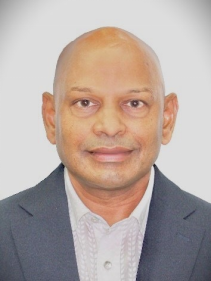一、讲座日期
2025年4月24日(星期四)
二、讲座时间
09:30-11:30
三、讲座地点
图书馆二楼报告厅
四、讲座主题
《纳米科技赋能未来生活》
Nanotechnology Enabling Future Living
五、 讲座主持人
唐建荣 教授 贵阳信息科技学院校长(首席治校专家)
六、 讲座语言
英语
七、 讲座摘要
历史观察表明,人类正日益生活在一个由人工制造的世界中。对未来制造产品材料的期望,除了传统的性能、可用性和成本标准外,还包括新功能、智能化和可持续性。
智能材料能够可逆地与环境互动,或对环境变化作出响应或适应。智能材料可分为两类:
a) 辅助型智能材料依赖于外部条件;
b) 内置型智能材料则完全自给自足。
可持续材料通过减少或消除相关的温室气体(GHG)排放、浪费和资源消耗,促进健康的生态环境。这些材料经过专门设计或选择,具有更低的生态足迹和人类健康影响,以及更高的循环性和再生潜力。
近年来,静电纺丝作为一种纳米技术制造科学和工程方法崭露头角。本次研讨会将通过生产可持续和智能材料|产品的策略,展示这一技术的应用。
八、 讲座主讲人
 谢拉姆·拉马克里希纳教授(Professor Seeram Ramakrishna)是世界知名的跨领域学者,任职于新加坡国立大学(NUS)。新加坡国立大学在全球跨学科研究领域排名前三。拉马克里希纳教授被汤森路透(Thomson Reuters)评为“全球最具影响力科学家”之一,同时其研究论文被引用率高,引用次数约205,800次。其获得了多项最高专业荣誉,包括英国皇家工程院院士(FREng)、中国工程院外籍院士、新加坡工程院院士、印度国家工程院院士、东盟工程与技术学院院士、国际工程与技术学院院士等。
谢拉姆·拉马克里希纳教授(Professor Seeram Ramakrishna)是世界知名的跨领域学者,任职于新加坡国立大学(NUS)。新加坡国立大学在全球跨学科研究领域排名前三。拉马克里希纳教授被汤森路透(Thomson Reuters)评为“全球最具影响力科学家”之一,同时其研究论文被引用率高,引用次数约205,800次。其获得了多项最高专业荣誉,包括英国皇家工程院院士(FREng)、中国工程院外籍院士、新加坡工程院院士、印度国家工程院院士、东盟工程与技术学院院士、国际工程与技术学院院士等。
拉马克里希纳教授在学术背景上同样卓越,获得了英国剑桥大学的博士学位,并完成了美国哈佛大学的高级管理课程(TGMp),还在美国麻省理工学院(MIT)、约翰霍普金斯大学以及日本京都工艺纤维大学(KIT)积累了丰富的研究经验。此外,并担任中国清华大学和印度海得拉巴理工学院(IIT Hyderabad)的荣誉教授。
其研究领域主要集中在纳米纤维和纳米材料的生物、化学、电学、电子、机械和物理响应的理解与增强方面。他积极倡导智能材料和循环材料的研究,以推动联合国可持续发展目标(UN SDGs)的实现。
在新加坡国立大学工作的三十多年中,拉马克里希纳教授担任了约15年的高级学术领导职务,包括新加坡国立大学副校长(研究战略)、新加坡国立大学工程学院院长、新加坡国立大学企业机构(NUS Enterprise)主任、新加坡国立大学工业与技术关系办公室(INTRO)主任、新加坡国立大学国际关系办公室(IRO)主任、新加坡太阳能研究所(SERIS)主席、新加坡国立大学生物工程计划主任、新加坡国立大学纳米科学与纳米技术计划(NUSNNI)主任等。
拉马克里希纳教授的杰出贡献和领导力在学术界和工程领域产生了深远的影响。
Time: 09:30-11:30, Thursday, April 24th, 2025
Venue: Lecture Hall, Library Building
Host: Prof. Tang Jianrong, President, Guiyang Institute of Information Science and Technology
Language: English
Speaker:
|
|
Prof. Seeram Ramakrishna
Professor of Materials Engineering
Department of Mechanical Engineering
National University of Singapore
Biography:
Professor Seeram Ramakrishna is a world-renowned scholar of cross-field at the National University of Singapore (NUS),which is ranked among the top 3 universities in the world for interdisciplinary research. He is named among the World's Most Influential Minds (Thomson Reuters) and a highly cited researcher with 210 H-Index and about 205,800 citations.Highest professional distinctions include an Academician Fellow of UK Royal Academy of Engineering (FREng); Chinese Academy of Engineering; Singapore Academy of Engineering;Indian National Academy of Engineering; ASEAN Academy of Engineering & Technology; and International Academy of Engineering and Technology. He received a PhD from the University of Cambridge, UK, and TGMP from Harvard University, USA. He received advanced research experiences from MIT and Johns Hopkins University, USA and KIT, Japan.He is an Honorary Professor at the Tsinghua University, China and IIT Hyderabad, India. He made seminal contributions in understanding and enhancing the biological, chemical, electrical,electronic, mechanical, and physical responses of nanofibers/ nanomaterials. He advocates intelligent materials and circular materials towards UN SDGs.
Out of three decades of working at the National University of Singapore (NUS), about 15 years of senior academic leadership includes NUS Vice-President (Research Strategy); Dean of NUS Faculty of Engineering;Director of NUS Enterprise; Director of NUS Industry and Technology Relations Office (INTRO);Director of NUS International Relations Office (IRO); Chairman of Solar Energy Institute of Singapore (SERIS); Director of NUS Bioengineering Initiative; and Director of NUS Nanoscience & Nanotechnology Initiative (NUSNNI).
Abstract:
Historical observations indicate that people are increasingly living in a manufactured world. Manufactured products are ubiquitous in buildings and infrastructure, gadgets of living spaces, healthcare and wellbeing, birth, aging and death, transportation, energy systems, automation and robotics, information and communication technology, air, water, food and nutrition, agriculture and farming, textiles and garments, sports, leisure, entertainment, cultural activities, waste and pollution management, sanitation, safety, security, learning, education, climate mitigation and adaptation, and manufacturing and production. In other words, modern living is inundated with the manufactured products. There is a growing demand for products made from sustainable materials as well as intelligent materials.
Intelligent material interacts reversibly with its environment, or responds or adapts to changes in the environment. Two types of intelligent materials are envisaged: a) assisted intelligent materials rely on externalities and b) built-in intelligent materials are fully self-sufficient.
Sustainable material fosters a healthy living ecology via the elimination or reduction of associated greenhouse gas (GHG) emissions, wastage, and resources depletion. They are purposely designed or selected with lower ecological footprint and social costs, and higher circularity while satisfying the cost as well as functional requirements.
In recent years, electrospinning emerged as a nanotechnology method of manufacturing science and engineering. This seminar illustrates this technology with strategies for producing sustainable and intelligent materials | products.